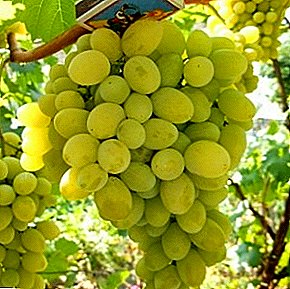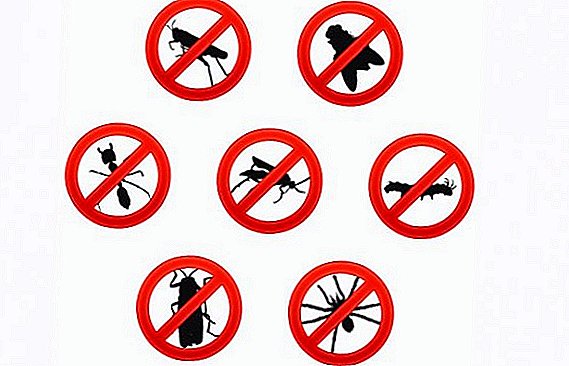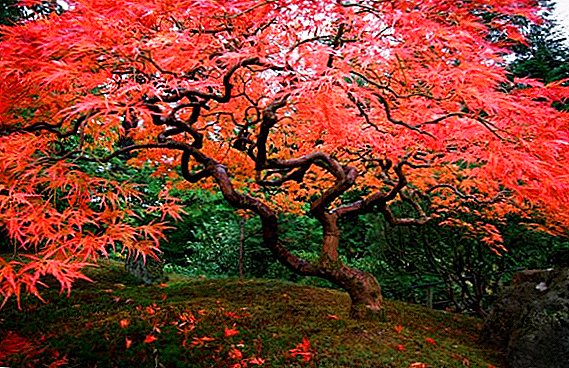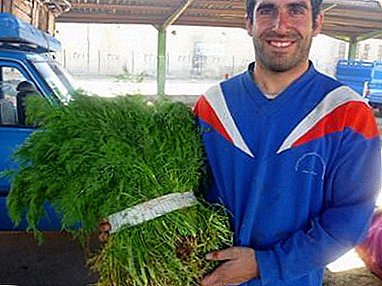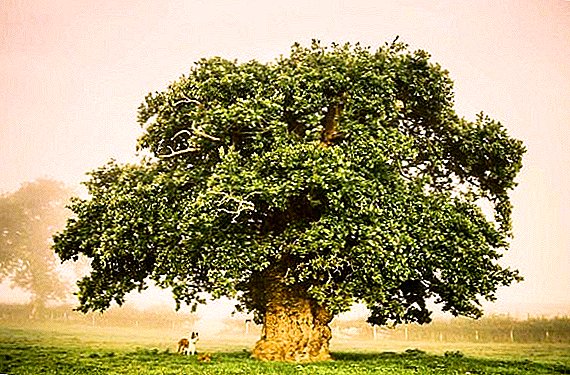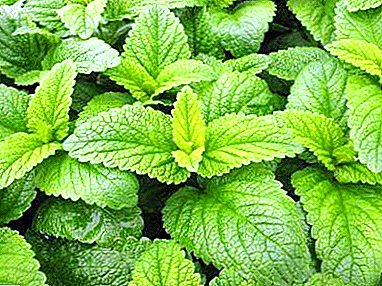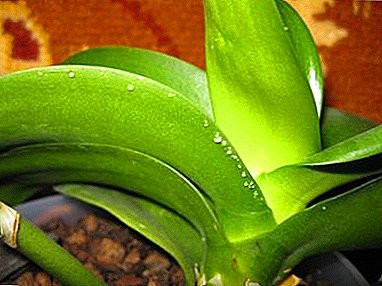
It is believed that orchids are naughty indoor flowers that often get sick. Therefore, novice growers are afraid to deal with them. And in vain. Mostly exotic plants suffer from improper care. This is confirmed by sticky droplets on the leaves.
In our article we will consider the possible causes of the appearance of sticky drops on an orchid and the way to eliminate them. You can also watch a useful video on this topic.
What it is?
Indeed, in orchids, sugar droplets can often be seen on the leaves.. And they are found not only in indoor varieties, but also in wild flowers. The scientific name for this phenomenon is transpiration. The substance is similar to dew drops, but if you look closer, you can see the sugar structure. To the touch - sticky, to the taste - sweet drops.
The main causes of
The reasons for this unusual phenomenon can be varied.
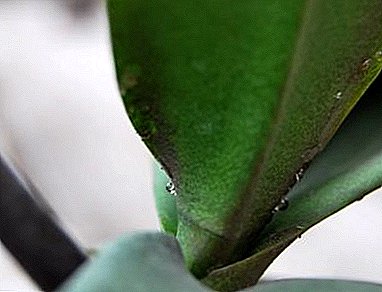 Attracting insects. Orchids in natural habitat attract insects for pollination, through sweet nectar. In this case, the formation of sticky droplets is a natural process of processing sugars inside the flower.
Attracting insects. Orchids in natural habitat attract insects for pollination, through sweet nectar. In this case, the formation of sticky droplets is a natural process of processing sugars inside the flower.- Damage by insect pests. In case of poor immunity, an exotic flower is subjected to attacks by pests, in particular: aphids, shields, whiteflies, ticks, and bills. They feed on plant sap. And the sticky layer is a kind of signal for help.
- Features grade. Some types of orchids regularly produce a sweet layer, others, on the contrary, never do this. And it’s not even about the conditions of detention, although they may be the same.
- Disease affliction. Sugar drops are also evidence of powdery mildew infection. At the same time, white bloom is noticeable on the leaves, and at later stages - fungal sporulation in black.
- Deterioration of conditions. Under this item means:
- low room temperature;
- excessive watering;
- wet air;
- a glut of fertilizers.
We recommend watching the video about the reasons for the appearance of sticky drops on orchid leaves:
What to do if there are gummy spots on the orchid?
Before proceeding to active treatment of the plant, a visual inspection is required. First of all, pay attention to the state of foliage.
- If, in addition to sugar drops, there are black spots, it is a sign of powdery mildew. These dark spots can also be covered with white bloom, and every day the places of dislocation only increase.
- Yellow areas on the leaves may indicate an oversupply of mineral fertilizers.
- On the back of the sheet may be harmful insects. If they are there, they can be seen with the naked eye. It happens that insects stick to extra-flowery nectar, as a rule, it is a plant louse.
The appearance of drops of any nature on the leaves of orchids - an unnatural phenomenon. And if you delay the process of diagnosis and treatment, you can soon lose phalaenopsis.
When should you worry?
- Of course, there is no reason to panic, if the process of the appearance of sugar drops is physiological. It happens that domestic plants, like wild relatives, try to attract insects to themselves for pollination. Sweet nectar in this case serves as a kind of bait. At the same time, the orchid grows well, develops fruitfully, and there is no other reason for excitement. Sweet baits in which insects fall can further negatively affect the health of exotic. Possible risk of infection by infectious diseases.
 If the reason lies in the excess nutrients - this is serious. Through sweet drops, phalaenopsis brings out excess nutrients. What is dangerous, because an overabundance of fertilizing entails the formation of rot, the death of the peduncle and the rosette.
If the reason lies in the excess nutrients - this is serious. Through sweet drops, phalaenopsis brings out excess nutrients. What is dangerous, because an overabundance of fertilizing entails the formation of rot, the death of the peduncle and the rosette.- In the presence of harmful insects and powdery mildew worth worrying about. Immediately after confirming plausible assumptions, proceed to action. The more advanced the state of the orchid, the more difficult it will be to cure it.
Step-by-step instructions for treating the disease
So, when the cause of the sticky droplets is established, you need to move to decisive action.
Due to the dramatic change in care
Plants do not like being subjected to stress. Thus, it tries to pay attention.
Optimal conditions in the room play a significant role, therefore:
- set comfortable temperature and humidity parameters in the room;
- reduce the amount of mineral fertilizers consumed;
- minimize watering in winter;
- avoid sudden changes in temperature and drafts;
- move the flower pot to the sunny side, saving it from direct rays.
If plaque is caused by pests
Orchid, to protect itself, produces sweet nectar. And insects stick to it and die. Or another example of self-defense in the form of a food chain: sticky drops attract aphids, and that in turn ants who can easily cope with leaf cutters.
However, the sticky substance may, upon inspection, turn out to be traces of harmful insects that live on the back of the leaf and feed on the sap of the flower. As a result, phalaenopsis languishes, dies.
It is not difficult to deal with a similar problem, the main thing is to recognize it in time.. Help:
- remove the diseased plant from healthy;
- remove insects with a cotton swab;
- reduce watering in the cold season;
- moisten the space around the flower;
- if necessary, trim the affected areas;
- wipe the leaves with a soap solution at room temperature;
- if the soap does not help, the plant should be sprayed with an insecticide solution, the drugs Fosfamid, Fozalon, Nurell-D will do;
- Once every 10-14 days, a pot of orchid should be lowered into the water, after adding two tablets of "Alirina-B";
- important weekly preventive rinsing of the pot.
When the infectious threat passes, and the orchid will feel good, it can be returned to its original place.
If stickiness is needed to attract pollinators
 When phalaenopsis looks good and, in general, there are no questions to his health, then sugar nectar - the natural life process of an orchid. In this case, it serves to lure pollinators.
When phalaenopsis looks good and, in general, there are no questions to his health, then sugar nectar - the natural life process of an orchid. In this case, it serves to lure pollinators.
In such an unusual phenomenon there is nothing intimidating, and medical procedures should not be carried out. The only thing if the sticky layer spoils the appearance of the flower, it is washed off.
If the cause of the plaque is infection
Sweet substance is one of the symptoms of powdery mildew. Orchid infectious disease develops quickly, so do not waste time. Help:
- isolate infected exot;
- rinse the orchid with warm water;
- wait until dry;
- process the flower with the preparations "Aktara" and "Aktellik".
Board: Before using chemical preparations, first treat with traditional methods.
Prevention
Making sure the adhesive layer is relatively safe for the pet, It is important to create optimal conditions to protect the orchid from serious diseases.:
- Maintaining the temperature in summer: + 22-25ºС, in winter + 16-18ºС.
- Humidity 50-60%.
- Use only decontaminated, tested substrate for planting and transplantation.
- Illumination is required scattered, in summertime bright rays are better to shade.
- Be sure to air the room regularly.
- Moisten the orchid once a week. Between irrigation the soil should dry completely.
- Apply water quality, without impurities and salts.
- Fertilizing orchids need 2 times a month, especially during the flowering period. Top dressings to use with the preferential content of potassium and iron.
- Spray water daily.
Conclusion
In order not to bring phalaenopsis to complex treatment, one should be attentive to temperature differences, drafts, and air humidification. Regular visual inspection is also important. If sticky drops appeared once after watering, then there is nothing terrible in this phenomenon.


 Attracting insects. Orchids in natural habitat attract insects for pollination, through sweet nectar. In this case, the formation of sticky droplets is a natural process of processing sugars inside the flower.
Attracting insects. Orchids in natural habitat attract insects for pollination, through sweet nectar. In this case, the formation of sticky droplets is a natural process of processing sugars inside the flower. If the reason lies in the excess nutrients - this is serious. Through sweet drops, phalaenopsis brings out excess nutrients. What is dangerous, because an overabundance of fertilizing entails the formation of rot, the death of the peduncle and the rosette.
If the reason lies in the excess nutrients - this is serious. Through sweet drops, phalaenopsis brings out excess nutrients. What is dangerous, because an overabundance of fertilizing entails the formation of rot, the death of the peduncle and the rosette.